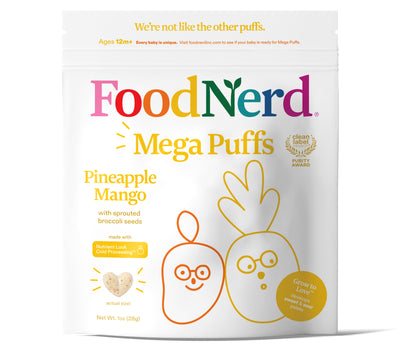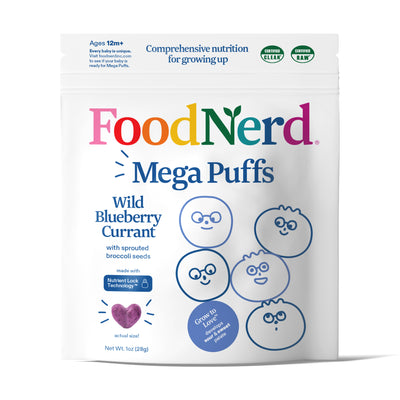Do you know what is in your food?
Maybe you frequently read the nutrition facts label and ingredient list. But do you know what half of those ingredients are? Soy lecithin, natural or artificial flavors, calcium carbonate, carboxymethyl cellulose—the list goes on and on.
The food we eat today looks nothing like what our ancestors ate, even those from a generation or two ago! Food is no longer just food. The vast majority of food in grocery stores is processed to some degree and contains some form of food additives.
Why food additives?
Food manufacturers use food additives to:
-
Extend shelf-life of food
-
Improve taste or texture
Read on to find out how we got to where we are now, what food additives are, and how they show up in our food.
In our next blog article on food additives, we will talk about the harmful effects that food additives have on our health.

The History of Food Additives
*Today, it is estimated that 75% of the Western diet comprises processed foods, with each person consuming about 8-10 lbs of food additives per year, which may be even higher for some people!*
How in the world did we get here?
Humans have always searched for better ways to feed themselves. We have gone from hunting and gathering to cultivating crops and raising animals. We have discovered better ways to preserve food, including drying, freezing, fermenting, pickling, and canning. Finally, we added molecules to our food to enhance its flavor or texture.
Back in the 1800s, food additives were purposely used to adulterate food. Adulterated food is “generally impure, unsafe, or unwholesome.” This was mainly a consequence of inadequate government regulation.
This led to a growing concern about the safety of the food supply, which resulted in laws being passed in the 1900s to help end the practice of food adulteration.
Of these laws, the Federal Food and Drugs Act (1906) led to the passage of the Food and Drug Cosmetics Act (1938) and its amendment, the Food Additives Amendment (1958).
The Federal Food and Drugs Act gave the U.S. Food and Drug Administration (FDA) the authority to regulate medical devices and cosmetics and establish food standards.
The Food Additives Amendment stated that any substance intentionally added to food was subject to approval by the FDA unless it was already considered GRAS (generally recognized as safe).
By the mid-20th century, food processing had become an essential part of our food production, and legal chemical additives were becoming more and more common in food.
So where are we at now with food additives?
Food additives have increased significantly over the past 30 years, totaling over 200,000 tons per year.
More than 3,000 additives and preservatives are intentionally added to our food. The FDA maintains a database of nearly 4,000 food additive ingredients called Substances Added to Food.
The FDA is responsible for evaluating food additives' safety and deciding whether or not they can be used in the food supply. BUT…
This may be a flawed process because once a food additive is approved, it needs to be reevaluated regularly with new science and does not consider the human experience and what happens to food ingredients in the body.
Additionally, there is a loophole in the Food Additives Amendment regarding GRAS ingredients. This is because the law allows manufacturers to determine if additives are “generally recognized as safe” and then use the substance without notifying the FDA.
Also, this law does not require manufacturers to inform the FDA when health reports suggest health hazards are associated with additives already used in food.
Which makes us wonder, how safe are food additives?
What Exactly are Food Additives?
A joint panel gave the very first definition of food additives made up of the Food and Agriculture Organization (FAO) of the United Nations and the World Health Organization (WHO).
This definition can be found in the Codex Alimentarius, a collection of standards, guidelines, and codes of practice put forth by the FAO and WHO programs.
The Codex Alimentarius defines a food additive as:“Any substance not normally consumed as a food itself and not normally used as a typical ingredient of the food, whether or not it has nutritive value, the intentional addition of which to food for a technological purpose in the manufacture, processing, preparation treatment, packing, packaging, transport or holding of such food results, or may be reasonably expected to result, (directly or indirectly) in it or its by-products becoming a component of or otherwise affecting the characteristics of such foods.”
*Note: This definition does not include contaminants or substances added to food for maintaining or improving nutritional qualities.
The FDA defines a food additive as:
“Any substance the intended use of which results or may reasonably be expected to result -- directly or indirectly -- in its becoming a component or otherwise affecting the characteristics of any food”
Talk about an overly broad and ambiguous definition!

Types of Food Additives
These definitions don’t tell us what food additives are, so it is essential to understand the different categories. Food additives are categorized into six distinct groups:
Preservatives
- Antimicrobials, antioxidants, and antibrowning agents,
- Antimicrobial additives prevent food spoilage. Antioxidants help to extend the shelf-life of foods, and antibrowning agents prevent food from browning during handling, processing, and storage.
Nutritional Additives
- Vitamins, amino acids, fibers, fatty acids, etc.
- These are added to enrich foods with nutrients. They originate from natural (plants, animals) and synthetic (produced in a lab) sources.
Coloring Agents
- Azo compounds, the chinophthalon derivatives, the triarylmethane compounds, the xanthenes, and the indigos
- They are also known as food dyes. They are used to alter or add colors to food to increase its attractiveness to consumers.
Flavoring Agents
- Sweeteners, natural and synthetic flavors, and flavor enhancers
- Used to change the way food tastes by enhancing it, sweetening it, or changing what it tasted from what it initially did.
Texturizing Agents
- Emulsifiers and stabilizers
- These chemicals are added to food to modify the overall texture or mouthfeel.
Food additives facts
- They produce different health disorders such as asthma, diarrhea, rashes, and many others.
- Some of them have been shown to be a risk factor for cancer.
- Many meals lose their original taste thanks to these additives.
- World Health Organization recommends having a diet consisting of fresh products rather than artificial, conserved meals.

Don’t Settle for Less When it Comes to Your Food
It is nearly impossible to keep track of the food additives that are used in our food today (remember there are over 3,000). Clearly, food additives have become a common ingredient in food—only they aren’t food.
Which leads us to…
Are they actually safe to be eating in such high quantities? Are they really all that necessary?
FoodNerd has shown us that there is no place for food additives in healthy, nutrient dense food. In fact, FoodNerd uses absolutely NO FOOD ADDITIVES whatsoever in their products—only ORGANIC, RAW, SPROUTED real food ingredients that support a heathy gut, body, and mind.
The next time you visit the grocery store, think twice about the food that you buy. Make sure to read the ingredients list and see what exactly is in the food you are eating. Don’t settle for food that is loaded with food additives—we deserve to eat food that does not contain things that may harm our health and vitality!

- Carocho, Marcio, Patricia Morales, and Isabel CFR Ferreira. "Natural food additives: Quo vadis?." Trends in food science & technology 45.2 (2015): 284-295.
- Carocho, Márcio, et al. "Adding molecules to food, pros and cons: A review on synthetic and natural food additives." Comprehensive reviews in food science and food safety 13.4 (2014): 377-399.
- Neltner, Thomas G., et al. "Navigating the US food additive regulatory program." Comprehensive Reviews in Food Science and Food Safety 10.6 (2011): 342-368.

















